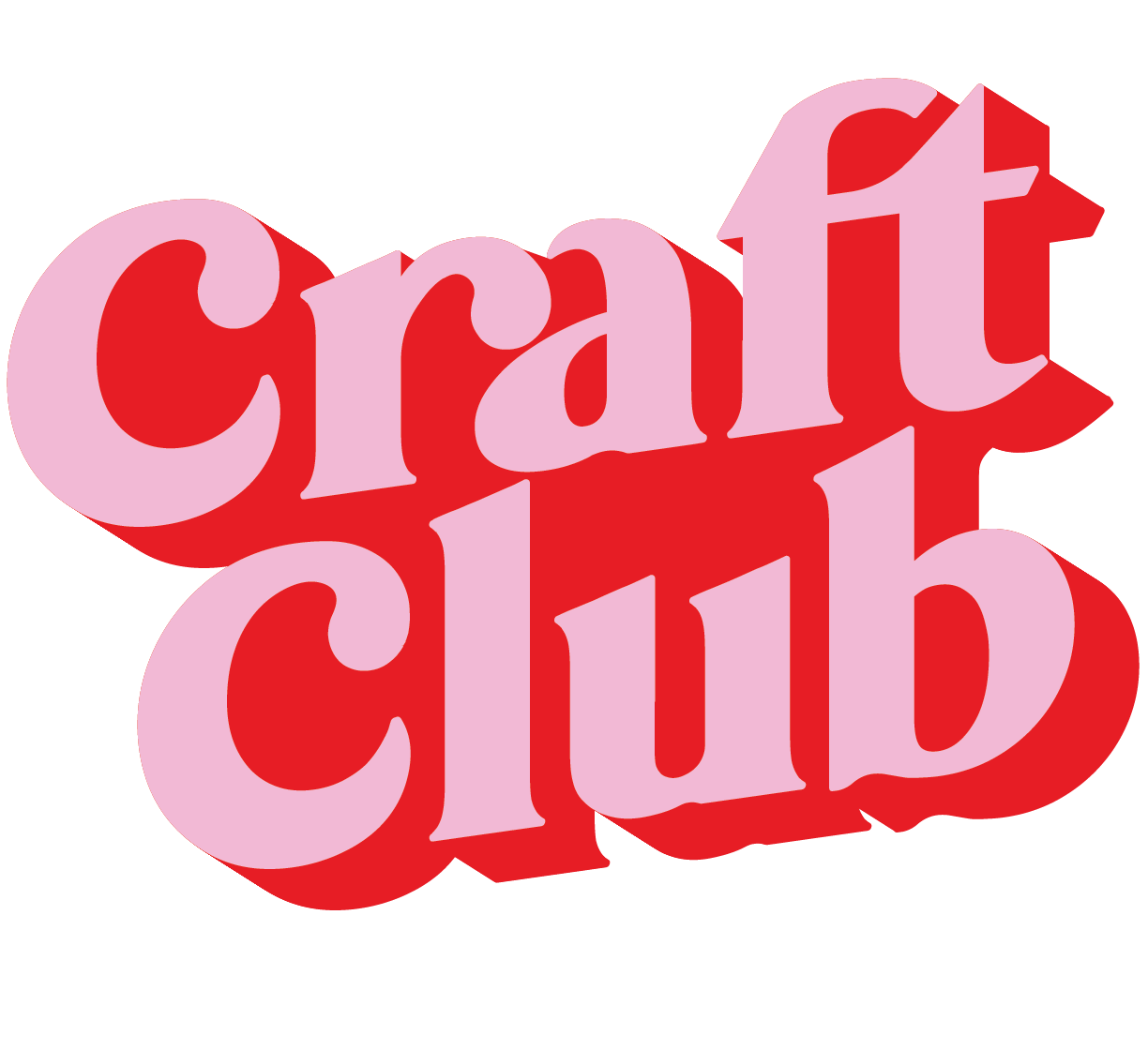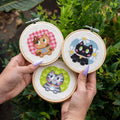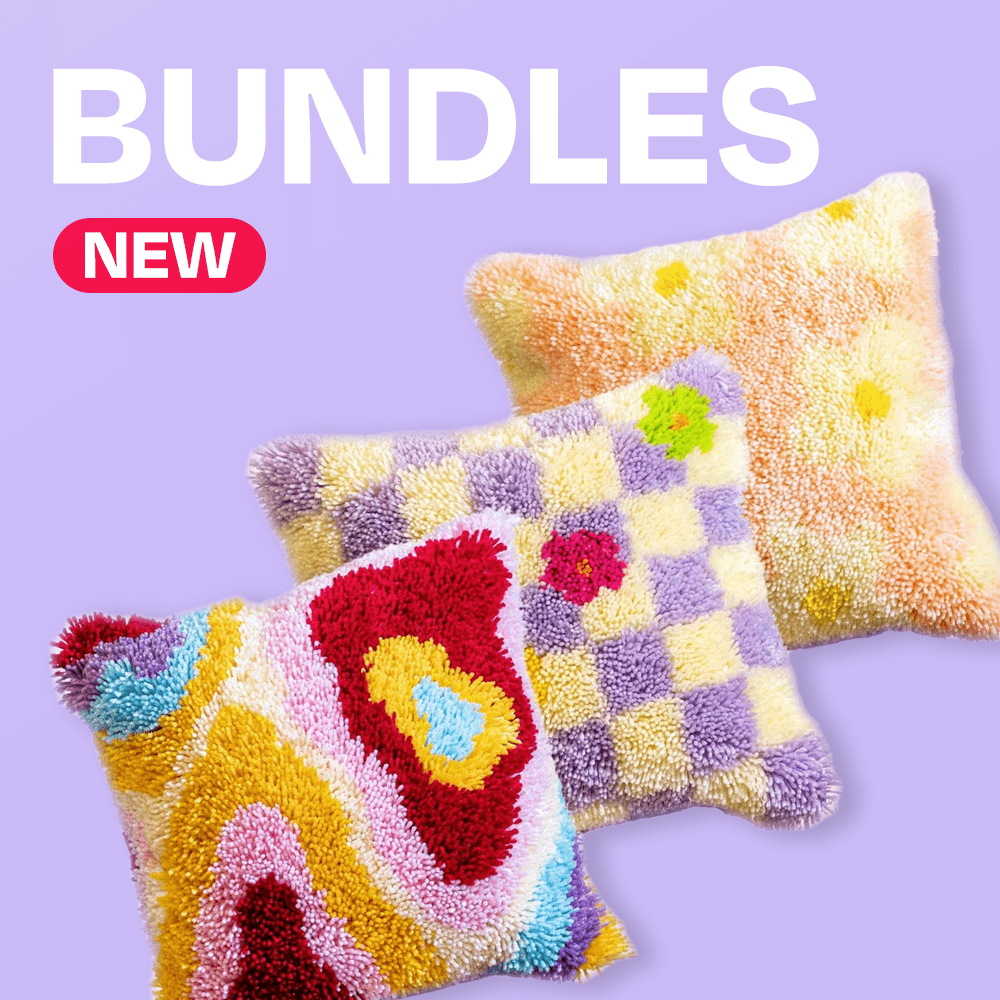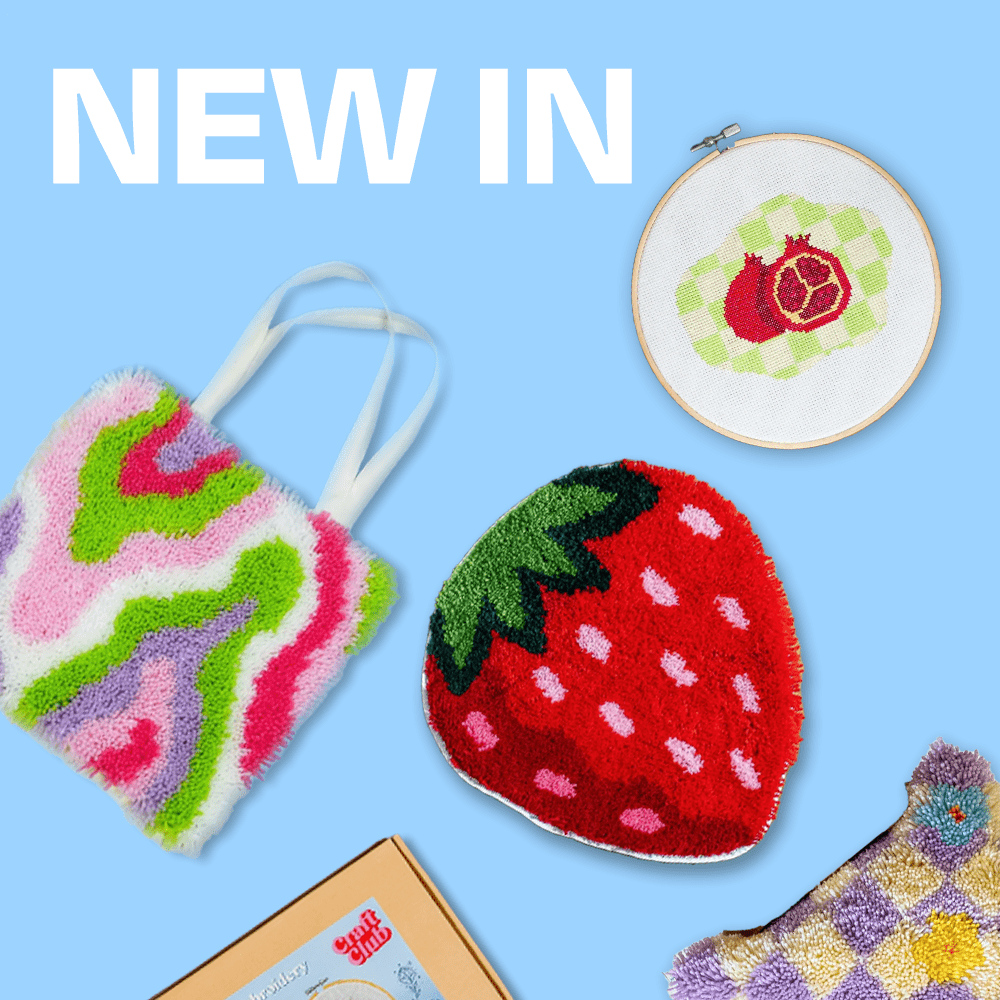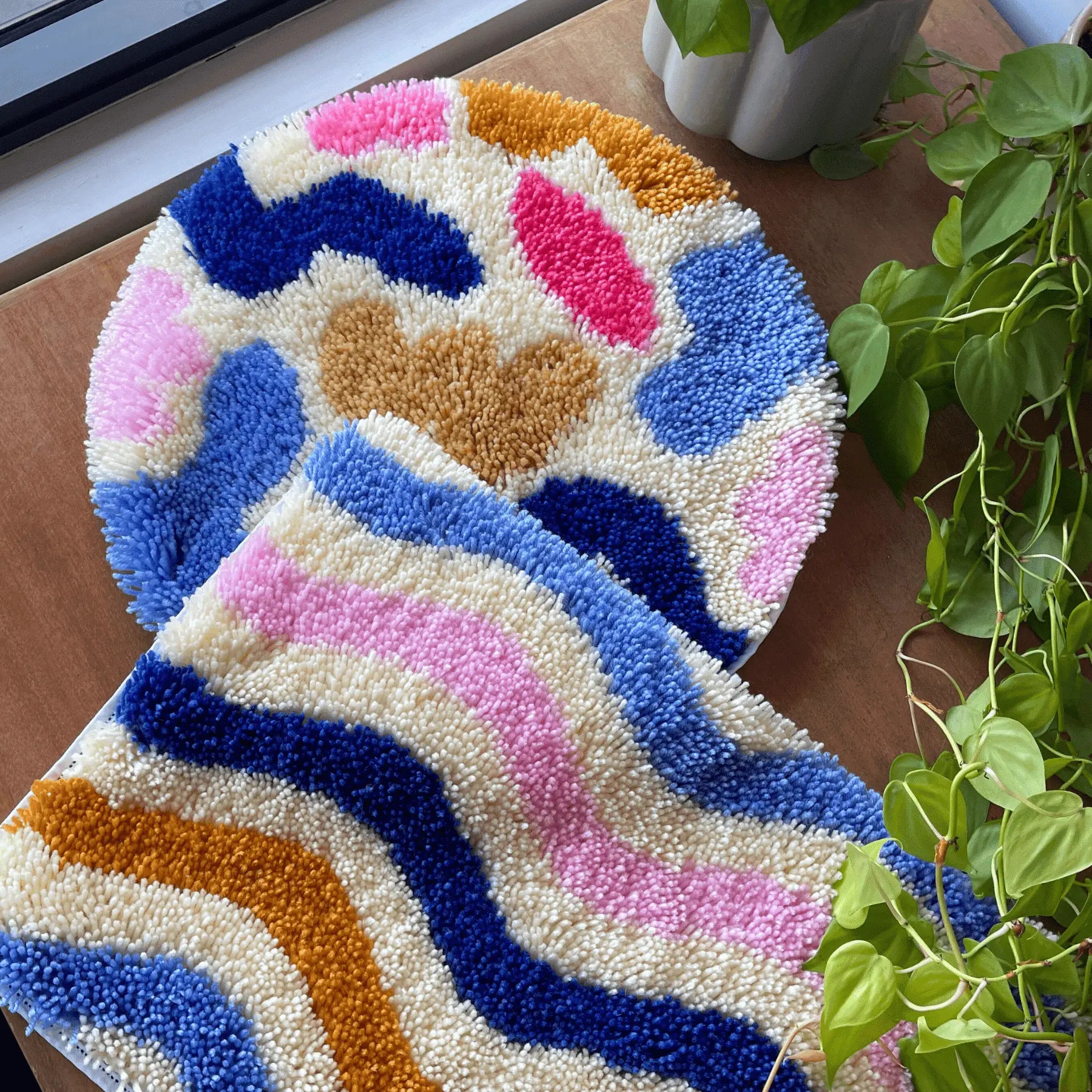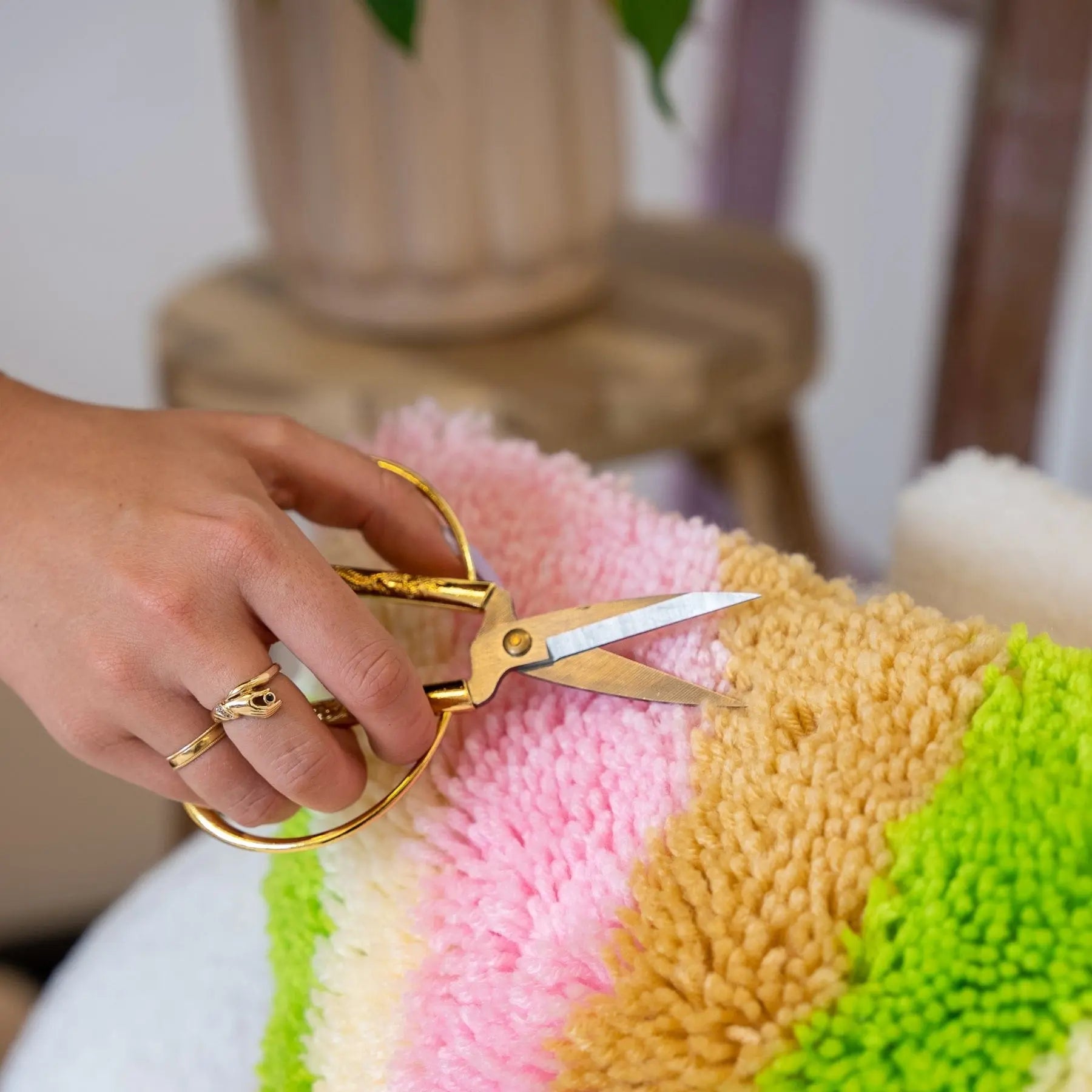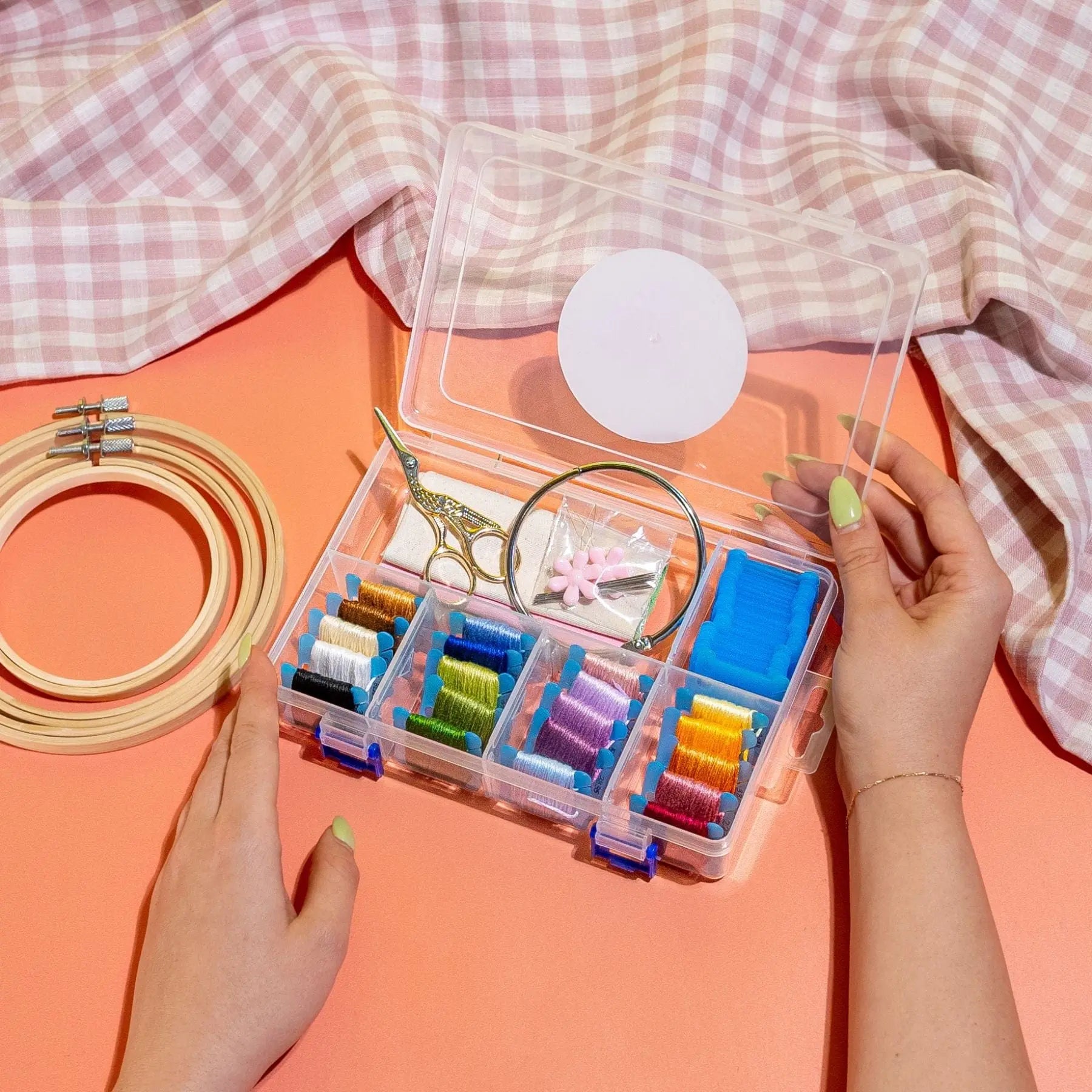Flower Patch Coaster Guide & Tutorials
Welcome to the guide for your FLOWER PATCH Moss Coaster Kit!
Below you will find all the information you need to create your own mossy oasis to display on your desk or coffee table. We've designed this kit to be used as a coaster but it also makes a gorgeous decor piece for your wall or even as a landscape for miniatures.
🌼 🌼 🌼
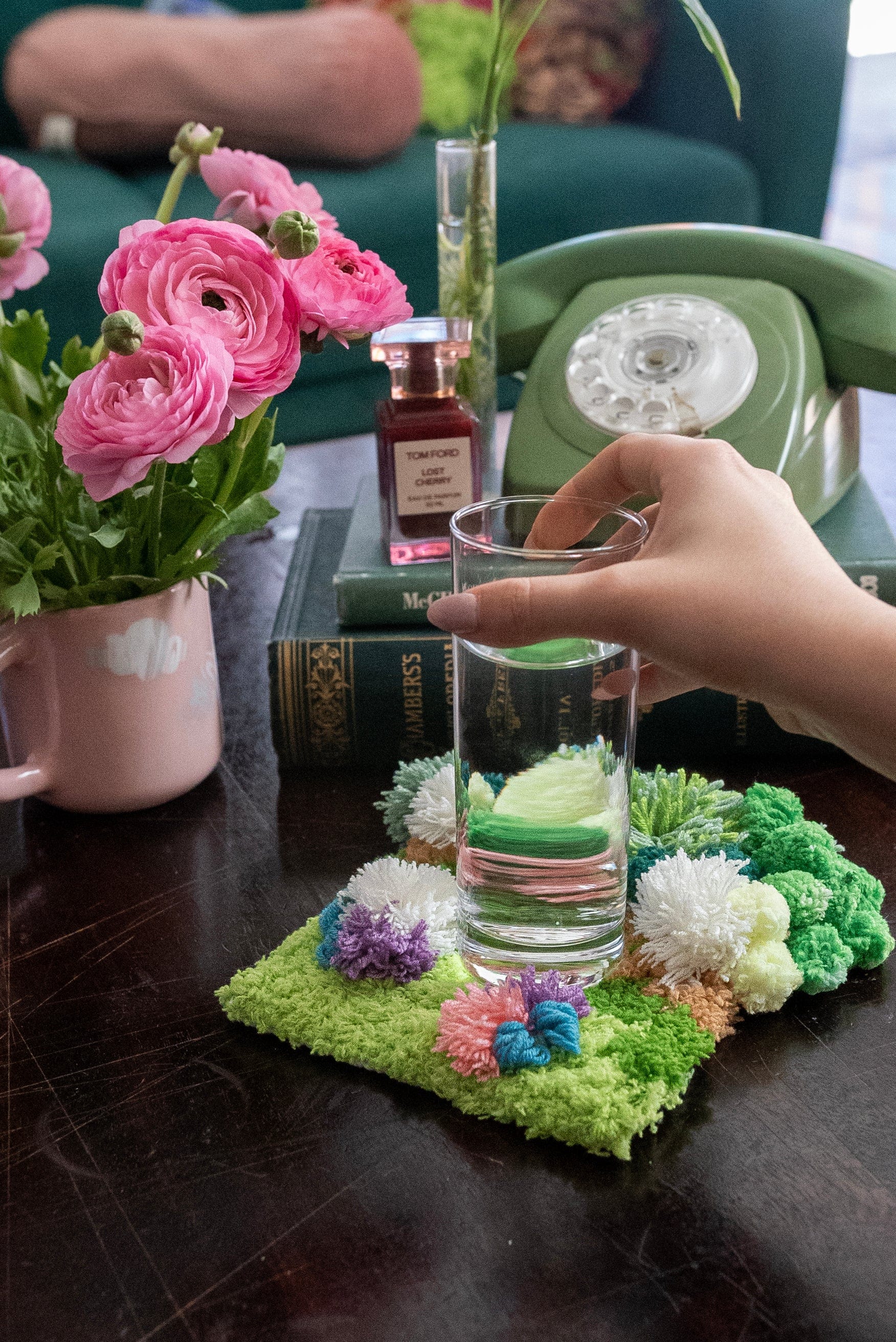
Inside Your Kit
Your moss kit includes ...
Materials & Fibre:
⭐ Latch-hooking canvas base
⭐ Felt backing
⭐ Feather yarn in 3x colours (brown, grass green and lime green)
⭐ Milk yarn in 7x colours (white, blue, pink, orange, purple, sage green and grass green)
⭐ Bobble yarn in a variegated green colour
⭐ White cotton thread
Tools:
⭐ Pom pom scissors
⭐ Small latch-hook (different tool from our other kits)
⭐ Weaving needle
⭐ Steel sewing needles
⭐ Glue spatula
⭐ Glue stick for hot glue gun (optional)
Learning:
⭐ Online instructions and video tutorials
⭐ Pattern template
Optional additions:
Our kits come with everything needed to sew the coaster backing on, but you may want to use fabric glue or hot glue if you have it handy.
You may also want to use sharp craft scissors for cutting your base. Our embroidery or rug trimming scissors are perfect for this project because of their size and sharp blade.
Flower Patch Guide
What you'll find inside your kit:
1. Transferring your Stencil
Your first step is to transfer your coaster design from the stencil onto your latch-hooking canvas. To do this you'll need your canvas and marker pen included inside the kit. Simply lay the canvas on top of your stencil and use the pen to trace the design behind it.
The stencil matches our design with the smaller shapes roughly indicating where we will stitch each type of 'moss' in the following steps.
Feel free to get creative with the shape of your design, as your coaster doesn't have to be exactly like the stencil. You could make it a little larger or smaller depending on how you'd like to use it. Just remember to leave at least a 1-inch space between your shape and the edge of the canvas. You could also place the shapes in different areas, if you want your moss to be a bit different to ours.
If you want to make your coaster exactly like ours, follow the below stencil:

2. Weaving your Bobble Yarn
The first area you want to fill in is your bobble yarn. In the above diagram thats indicated by the blue sections. For this you'll need your bobble yarn and your plastic latch-hook.
Follow the below video tutorial to fill in your chosen bobble sections.
3. Creating your Pom Poms
Next you'll create your pom poms and place them on your canvas. Our video tutorial explains how you can create a standard pom pom as well as a few variations. For this you'll need your milk yarn in your preferred colours and plastic latch-hook.
For our Flower Patch coaster we've used a range of different pom poms in different colours. Let your creativity run wild with your pom poms! Choose whichever colours you're drawn to, I guarantee they'll look amazing.
If you want to recreate our exact pom poms, you can make the following designs.
- 1x large in white, green & blue
- 1x large in sage & green
- 3x medium in white with orange yarn to 'tie' the pom pom
Arrange these around your bobble yarn and tie them to the back of the canvas using your latch hook.
- 2x small in pink with white yarn to 'tie' the pom pom
- 2x small in purple with white yarn to 'tie' the pom pom
- 2x small blue bow pom poms
Save these smaller pom poms to attach after you've woven your green grass.
4. Weaving your Feather Yarn
Now it's time to weave in the 'grass' underneath your moss. You'll be using your 3x shades of feather yarn for this section, as well as the plastic weaving needle included in your kit. You can follow along with the order that we've stitched our colours, or use totally different colours for each section. It's up to you!
Leave spaces for your coloured pom poms if you like. Or you can fill up the entire space and decide where to tie down your pom poms after.
If you have a favourite mug, it might be a good idea to test it out on your design. Make sure that it can fit in between your pom poms so that your coaster is still practical!
5. Backing your coaster
Congratulations on finishing the main part of your coaster! Now you're onto the home stretch, its time to sew the back of your coaster.
There are 2x steps to finishing your coaster, which we show in the below tutorial. First you'll need to roughly trim the canvas edging and sew it down to the back of your piece.
Then it's time to back your coaster with your felt either with glue or by sewing it. If you're using it as a decor piece or to hang on the wall, it may be better for you to leave it at it's current stage. It will be easier to hang on a wall hook if the back is free from felt.
Sewing your Backing
Our kit includes all of the supplies you need to sew the backing of your coaster.
To sew your fabric you'll want to trace the shape of your coaster so that you can cut out the felt fabric to match the shape. You can do this with a pencil or pen.
You will then need to pin your felt backing to your coaster so you can begin sewing the edges. You can do this by using sewing pins, bulldog clips or even tacking the back with a hot-glue gun. I find bulldog clips the easiest method of holding my coaster to the felt.
Using 3-strands of your cotton thread, begin stitching your canvas to your mossy coaster using a whip stitch. This just means that you will whip your thread around and around the edge of your coaster as you go around. Don't worry if your stitches don't look perfectly neat, they'll blend into the grass on your coaster and won't be visible when you're finished.
Gluing your Backing
If you have any fabric glue handy or a hot glue gun then you can also glue the backing of your coaster. We've included a glue stick for a standard craft hot glue gun, as well as a glue paddle if you have fabric glue.
To glue your fabric you'll simply place fabric glue across the middle of your felt square and place your coaster on top. Allow it to dry so that the coaster is secure - you may want to put a heavy book on top of your coaster to add pressure. Once it's dry you can take a sharp pair of scissors to cut around the coaster.
You can then top up the glue on the edges, if any sections are lifting up.
Thank you!
I hope you've loved creating your very own moss coaster creation! All of these tutorials are personally written and filmed by me - Nakisah - the founder of Craft Club. I always love hearing from customers (whether you loved your experience, or there was something you'd like to give feedback on) so please come say hi at hello@craftclubco.com or send us a DM over on Instagram @craft.club.co.
I'm always working on ways to improve our kits so that they are as easy as possible for our incredible customers! So all feedback is welcome (but please be nice haha).
Nakisah x
